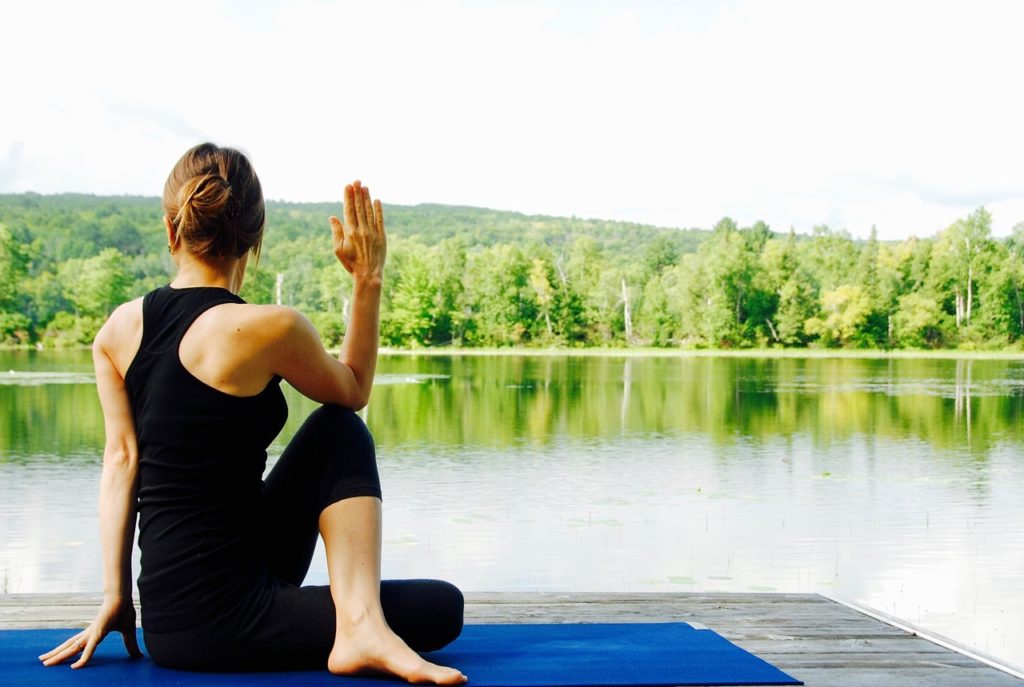The more I talk to friends about yoga, the more I realize the importance of small adjustments.
I’m absolutely not an expert, but I’m happy to say that I’ve been able to help quite a few people completely change how they feel about yoga over the years just by talking them through minor adjustments and modifications.

Some yoga classes are great about offering variations, modifications and guidance, but some…aren’t. If you’re doing yoga at home via YouTube videos or DVDs, you might not even know that you need to make adjustments to make a pose or sequence work for you.
I know I’ve already written a post about why yoga shouldn’t hurt, but today I want to focus on three mistakes that I made for a LONG time before an instructor pointed out that I was probably hurting myself and making the whole sequence unpleasant (she was right on both counts).
1. Putting too much weight in your hands
Poses like downward dog and cat/cow require you to place some of your weight into your hands, but there’s a good chance you’re leaning into them too heavily.
If your wrists hurt, your hands feel numb or your shoulders feel fatigued, you’re probably guilty of this.
Don’t feel bad! It’s not something that is made clear by most yoga instructors, and there aren’t many instances where a teacher or an instructional video will show you the correct way.
Downward dog is a good pose to practice resting lightly in your hands. When you set up the pose, try to draw your hips and tailbone up toward the ceiling, and settle back into your heels while maintaining the right alignment in your spine. Drawing your shoulder blades back and down can also help take some of the weight out of your wrists.
Another great pose to use for practice lifting out of your wrists is the seated spinal twist. Resting lightly in your fingertips and pushing yourself upward while you twist makes a huge difference in the pose.

Whenever you’re in a pose that requires you to use your hands for balance, the load on your wrists should feel light so that the rest of your body is what’s doing the work.
Correcting this will make a noticeable difference, but it does take concentrated effort to break the habit.
2. Hunching or tilting forward when seated
Even if you’re actively trying to sit up straight, it’s all too easy for your body to naturally list forward or slump when you’re in a seated position.
Honestly, this is something that I still have to work on, but there are a couple of things I’ve found that consistently help.

The first is to use a folded-up towel or stiff blanket to tilt your pelvis forward. If you have a thin foam block, that would also work. Wedge the towel or block under your tailbone, and you’ll be able to immediately feel how much easier it is to sit up straight.
3. “Powering through” a move
There’s a difference between challenging yourself and not listening to your body.
One of the best yoga lessons I learned is this: Just because you’re given harder modifications doesn’t mean you need to take them.
This is another one that takes some practice, but learning when to stretch your comfort zone and when to let yourself rest.
You have permission to maintain the “easy” version of a pose, even if everyone else is doing something more difficult.
Challenge yourself, but take small steps. Don’t feel like you need to power through a move if it’s uncomfortable or painful.
Let’s Chat!
The three mistakes I outlined are common ones that almost all of us are guilty of at some point. I’m especially guilty of them!
Are there any other common mistakes that you’re guilty of making? Let’s discuss ways to make our yoga practices smoother and more relaxing in the comments!